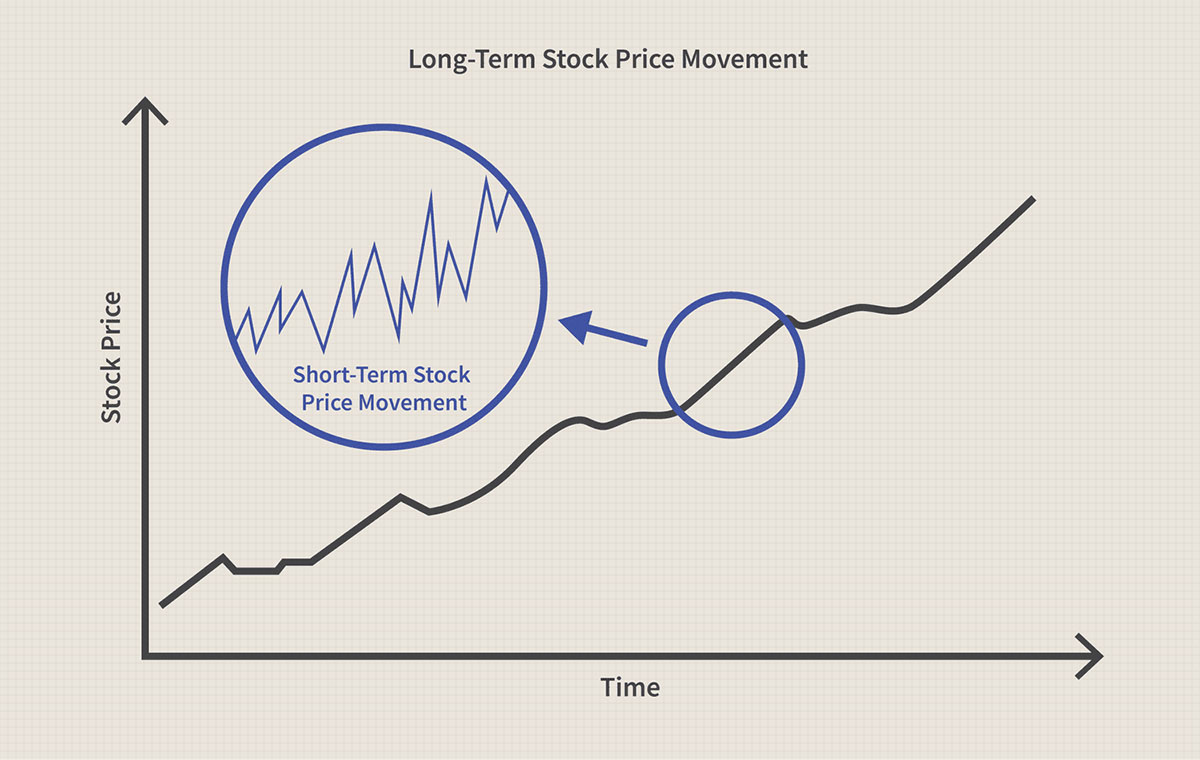

Finance
How To Invest In The Indian Stock Market
Published: November 24, 2023
Learn how to invest in the Indian stock market and make informed financial decisions. Explore finance options and maximize your returns
(Many of the links in this article redirect to a specific reviewed product. Your purchase of these products through affiliate links helps to generate commission for LiveWell, at no extra cost. Learn more)
Table of Contents
- Introduction
- Understanding the Indian Stock Market
- Types of Investments in the Indian Stock Market
- Factors to Consider Before Investing
- Opening a Demat Account
- Choosing a Stockbroker
- Fundamental Analysis of Stocks
- Technical Analysis of Stocks
- Investing Strategies
- Risk Management
- Diversification of Investments
- Investing in Mutual Funds
- Investing in Exchange Traded Funds (ETFs)
- Investing in Initial Public Offerings (IPOs)
- Investing in Derivatives
- Taxation on Stock Market Investments
- Monitoring Your Investments
- Tips for Successful Investing
- Conclusion
Introduction
Welcome to the world of investing in the Indian stock market! Investing in stocks can be an exciting and rewarding financial journey, but it can also be overwhelming for beginners. Whether you’re looking to build wealth for the long term or generate income through trading, the Indian stock market offers numerous opportunities for investors.
The Indian stock market, also known as the Bombay Stock Exchange (BSE) and the National Stock Exchange (NSE), is one of the oldest and largest stock markets in Asia. It plays a crucial role in the economy, facilitating the buying and selling of stocks and securities.
Investing in the stock market allows individuals and institutions to become shareholders in publicly traded companies and participate in their growth and profitability. By investing in well-researched and carefully selected stocks, investors have the potential to generate wealth and achieve financial goals.
Before diving into the world of stock market investing, it is essential to understand the fundamentals of how the market works, the different types of investments available, and the factors to consider before making any investment decisions.
This comprehensive guide aims to provide you with the knowledge and insights necessary to navigate the Indian stock market successfully. We will cover various aspects of investing, including how to open a demat account, choose a stockbroker, analyze stocks through fundamental and technical analysis, implement investing strategies, manage risks, and monitor your investments.
Whether you are a seasoned investor or a beginner, the Indian stock market offers ample opportunities to grow your wealth. However, it is crucial to approach investing with a clear understanding of the risks involved and to make informed decisions based on thorough research and analysis.
So, if you’re ready to embark on this exciting journey and harness the potential of the Indian stock market, let’s dive in and explore the various avenues of investing together!
Understanding the Indian Stock Market
Before diving into the world of stock market investing, it is crucial to have a solid understanding of how the Indian stock market operates. The Indian stock market is a platform where buyers and sellers trade stocks and other financial instruments. It consists of two major stock exchanges: the Bombay Stock Exchange (BSE) and the National Stock Exchange (NSE).
The BSE, established in 1875, is the oldest stock exchange in Asia and one of the largest in the world. It is home to some of India’s most prominent companies. On the other hand, the NSE, founded in 1992, has a larger trading volume and is known for being technologically advanced.
The Indian stock market operates on the principles of supply and demand. When there is a high demand for a stock, its price tends to rise. Conversely, when there is more supply than demand, the price may decline. The movement of stock prices is influenced by various factors, including economic conditions, industry trends, company performance, and investor sentiment.
Stocks represent ownership in a company. When you invest in stocks, you become a shareholder and have a stake in the company’s growth and profits. The value of your investment can fluctuate depending on market conditions and the company’s performance.
Trading on the Indian stock market mainly takes place during regular trading hours, which are typically from 9:15 am to 3:30 pm on weekdays. However, there are also pre-market and post-market trading sessions that allow investors to place orders before and after regular trading hours.
Market indices are used to gauge the overall performance of the stock market. The benchmark indices in India are the Sensex (BSE) and the Nifty 50 (NSE), which track the performance of select stocks across different sectors.
In order to participate in the Indian stock market, you will need to open a demat account, which is a digital account that holds your shares in electronic form. This account ensures secure and seamless transactions.
Now that you have a basic understanding of the Indian stock market, it’s time to explore the different types of investments available. In the next section, we will delve into the various investment options that you can consider to grow your wealth in the stock market.
Types of Investments in the Indian Stock Market
When it comes to investing in the Indian stock market, there are several different types of investments you can consider. Each investment option offers its own set of advantages and risks, catering to the diverse needs and preferences of investors. Let’s explore some of the common types of investments available:
- Stocks: Investing in individual stocks involves buying shares of specific companies listed on the stock exchange. By buying stocks, you become a part-owner of the company and can benefit from its growth and profitability. Stocks offer the potential for high returns but also come with higher risks.
- Mutual Funds: Mutual funds pool together money from multiple investors and invest in a diversified portfolio of stocks, bonds, or other securities. They are managed by professional fund managers who make investment decisions on behalf of the investors. Mutual funds offer diversification and are suitable for investors looking for a hands-off approach.
- Exchange Traded Funds (ETFs): ETFs are similar to mutual funds but trade on the stock exchange like individual stocks. They track specific indices or sectors and offer investors exposure to a broader market. ETFs provide flexibility, liquidity, and lower expense ratios compared to mutual funds.
- Initial Public Offerings (IPOs): An IPO is the process through which a private company goes public by offering its shares for the first time. Investors can subscribe to IPOs and become shareholders in the company. IPOs have the potential for significant gains but can be volatile and carry risks.
- Derivatives: Derivatives are financial instruments that derive their value from an underlying asset, such as stocks or indices. Common types of derivatives in the Indian stock market include futures and options. Derivatives offer opportunities for speculation, hedging, and leverage but should be approached with caution due to their complex nature.
It’s important to consider your financial goals, risk tolerance, and investment horizon when choosing the right type of investment. Diversification is also crucial, as it helps spread the risks across different asset classes.
It’s recommended to consult with a financial advisor or do thorough research before making any investment decisions. Understanding the characteristics, advantages, and risks of each investment option will help you make informed choices and achieve your financial objectives.
In the next section, we will discuss some essential factors to consider before investing in the Indian stock market. These factors will help you assess your readiness, set realistic expectations, and formulate an effective investment strategy.
Factors to Consider Before Investing
Investing in the Indian stock market can be a profitable venture, but it’s crucial to adequately assess your financial situation and consider certain factors before diving in. Here are some key factors to consider before making any investment decisions:
- Financial Goals: Clearly define your financial goals, whether it’s long-term wealth accumulation, purchasing a house, funding education, or planning for retirement. Knowing your goals will help you determine your investment horizon and the level of risk you can afford to take.
- Risk Tolerance: Evaluate your risk tolerance, which refers to your ability to withstand fluctuations and potential losses in the stock market. Consider your age, income stability, and overall financial situation to determine how much risk you can comfortably handle.
- Knowledge and Education: Gain a solid understanding of how the stock market works, different investment options, and investment strategies. Educate yourself through books, online resources, and financial courses to make informed decisions.
- Financial Health: Assess your overall financial health, including your income, expenses, and debt obligations. Ensure you have a stable financial foundation with emergency funds and sufficient insurance coverage before considering stock market investments.
- Market Research: Conduct thorough research on the companies or sectors you plan to invest in. Analyze their financial performance, management, competitive advantages, and growth prospects. Keeping up with market news and trends is also essential.
- Timing: Timing the market to perfection is nearly impossible. Instead, focus on a long-term investment strategy and avoid succumbing to short-term market fluctuations. Invest consistently and stick to your plan.
- Professional Advice: Consider seeking professional advice from a certified financial planner or investment advisor who can guide you based on your unique financial circumstances and goals.
- Emotional Discipline: Emotions can cloud judgment and lead to poor investment decisions. Develop emotional discipline and avoid succumbing to fear and greed in the market. Stick to your investment plan and avoid impulsive reactions to market volatility.
By considering these factors, you can establish a solid foundation for your investment journey and reduce the risk of making hasty or uninformed decisions. Remember, investing in the stock market is a long-term commitment, and staying informed and adaptive is key to achieving success.
In the next sections, we will discuss practical steps, such as opening a demat account and choosing a stockbroker, as well as different investment strategies and risk management techniques to maximize your chances of success in the Indian stock market.
Opening a Demat Account
In order to invest in the Indian stock market, you need to open a demat account. A demat account, short for dematerialized account, is an electronic account where your shares and securities are held in a digital format. It eliminates the need for physical share certificates and offers a convenient and secure way to trade and hold investments.
Here are the steps to open a demat account:
- Select a Depository Participant (DP): A depository participant is an intermediary registered with depository, such as the National Securities Depository Limited (NSDL) or the Central Depository Services Limited (CDSL). They facilitate the opening and maintenance of demat accounts. Choose a DP based on factors like reputation, service quality, charges, and convenience.
- Fill the Account Opening Form: Visit the website or office of the chosen depository participant and fill out the demat account opening form. Provide required details such as personal information, address proof, identity proof, and PAN card.
- Submit Documents for Verification: Along with the account opening form, submit the necessary documents for verification. This may include copies of identity proof, address proof, PAN card, and passport-sized photographs.
- Complete the KYC Process: As part of the account opening process, you will be required to complete the Know Your Customer (KYC) process. This involves submitting additional documents to fulfill the regulatory requirements.
- Agree to Terms and Conditions: Read and understand the terms and conditions provided by the depository participant, including the charges for account maintenance and transactions. Ensure you are aware of the rights and responsibilities associated with the demat account.
- Sign the Agreements: Sign the necessary agreements, such as the account opening agreement and the power of attorney. These agreements authorize the DP to act on your behalf for various transactions related to the demat account.
- Receive Demat Account Details: Once the account opening process is completed and all documents are verified, you will receive a unique demat account number (DP ID) and a Client ID. These details are crucial for future transactions and communication with the depository participant.
- Brokerage Charges: Evaluate the brokerage charges and fees levied by different stockbrokers. This includes account opening charges, transaction charges, annual maintenance charges, and other fees. Compare the costs and select a broker that offers competitive rates and transparent pricing.
- Trading Platforms: Assess the stockbroker’s trading platforms and technology infrastructure. Consider whether they provide a user-friendly and stable trading platform with features like real-time market data, advanced charting tools, order placement options, and mobile trading capabilities.
- Research and Advisory: Look for a stockbroker that offers research and advisory services. This includes analysis reports, stock recommendations, and market insights to help you make informed investment decisions. Evaluate the credibility and quality of their research before relying on it.
- Customer Service: Consider the quality of customer service provided by the stockbroker. Efficient customer support is crucial when you need assistance with technical issues, account-related queries, or trade-related matters. Look for brokers with responsive customer service channels, such as phone, email, and online chat.
- Range of Investment Options: Determine the range of investment options available through the stockbroker. This includes the ability to trade in stocks, mutual funds, ETFs, IPOs, and derivatives. Choose a broker that provides the investment options that align with your investment goals and strategies.
- Trading Experience: Consider the stockbroker’s experience and reputation in the industry. Look for brokers who have a proven track record and a good reputation for integrity and reliability. Check online reviews and seek recommendations from experienced investors.
- Accessibility: Evaluate the accessibility of the stockbroker’s services. This includes the availability of branch offices, online trading platforms, and mobile applications. Choose a broker that offers convenient access to their services based on your preferences.
- Regulatory Compliance: Ensure that the stockbroker is registered with the relevant regulatory authorities, such as the Securities and Exchange Board of India (SEBI). This ensures that the broker adheres to the necessary regulations and maintains high ethical standards.
- Financial Statements: Review the company’s financial statements, including the balance sheet, income statement, and cash flow statement. These statements provide insights into the company’s revenues, expenses, assets, liabilities, and cash flows. Analyze factors such as revenue growth, profit margins, debt levels, and cash flow stability.
- Company Earnings: Assess the company’s earnings and earnings per share (EPS) over time. Look for consistent growth in earnings, as it indicates the company’s ability to generate profits. Compare the company’s earnings with its industry peers to gauge its relative performance.
- Industry Analysis: Understand the industry dynamics in which the company operates. Evaluate factors such as market size, competition, entry barriers, and growth prospects. A strong industry outlook can positively impact the company’s potential for growth.
- Management and Leadership: Assess the competency and track record of the company’s management team. Look for experienced and trustworthy leaders who have a clear strategic vision and a track record of executing their plans successfully. Management quality plays a vital role in the long-term success of a company.
- Competitive Advantage: Identify the company’s competitive advantages or unique selling points that give it an edge over competitors. This can include factors like strong brand recognition, proprietary technology, cost leadership, or a unique business model. Companies with sustainable competitive advantages are more likely to thrive in the long run.
- Valuation: Assess the valuation of the company’s stock relative to its intrinsic value. This involves valuing the company based on metrics like price-to-earnings (P/E) ratio, price-to-book (P/B) ratio, and discounted cash flow (DCF) analysis. Compare the company’s valuation with its historical averages and industry peers to identify potential undervalued or overvalued stocks.
- Risks: Evaluate the risks associated with investing in the company. This can include factors like regulatory risks, macroeconomic factors, competitive threats, management risks, and industry-specific risks. Understanding and assessing the risks helps in making informed investment decisions.
- Charts and Patterns: Technical analysis utilizes charts to identify patterns and trends in stock prices. Common chart types include line charts, bar charts, and candlestick charts. Traders look for patterns such as support and resistance levels, trendlines, and chart patterns like double tops, head and shoulders, and triangles.
- Indicators: Technical analysts use indicators to gain additional insights into the strength and direction of price movements. These indicators include moving averages, oscillators, and relative strength index (RSI). Indicators help traders identify potential buy or sell signals and confirm the strength of a trend.
- Volume Analysis: Volume is a key component of technical analysis. By analyzing volume trends, traders assess the level of market participation and the intensity of buying or selling pressure. Volume indicators are used to confirm trends and identify significant price moves.
- Trend Analysis: Technical analysts focus on identifying and following trends in stock prices. Prices tend to move in trends, whether uptrends, downtrends, or sideways trends. By correctly identifying and trading with the trend, traders increase their chances of making profitable trades.
- Support and Resistance: Support and resistance levels are areas on a stock’s chart where prices have historically struggled to move below (support) or above (resistance). These levels act as key psychological and technical barriers and can be used to set entry and exit points for trades.
- Risk Management: Technical analysis involves implementing risk management strategies. This includes setting stop-loss orders to limit potential losses and determining target levels for taking profits. Risk management is essential to protect capital and minimize the impact of potential adverse price movements.
- Value Investing: Value investing involves identifying undervalued stocks that are trading below their intrinsic value. Investors using this strategy focus on companies that they believe are fundamentally strong but temporarily undervalued by the market. They seek opportunities to buy these stocks and hold them for the long term, anticipating that the market will eventually recognize their true value.
- Growth Investing: Growth investing involves identifying stocks of companies with significant growth potential. Growth investors focus on entities that are expected to grow their revenues and earnings at an above-average rate. They look for companies in emerging industries or with innovative products or services that have the potential to outperform the market in the long run.
- Dividend Investing: Dividend investing involves investing in stocks of companies that regularly distribute dividends to shareholders. Dividend investors prioritize stocks that offer stable and growing dividend payouts. This strategy can provide a regular income stream along with the potential for capital appreciation.
- Index Fund Investing: Index fund investing involves buying funds that replicate a specific market index, such as the Nifty 50 or the Sensex. This strategy offers diversification across various stocks and sectors in a single investment. Index funds are passively managed and aim to match the performance of the underlying index. They are suitable for investors looking for a low-cost, long-term investment approach.
- Contrarian Investing: Contrarian investing involves going against the prevailing market sentiment. Contrarian investors look for opportunities to buy stocks that are out of favor and sell stocks that are overhyped. They believe that markets often overreact to news and create mispriced securities, presenting buying or selling opportunities for astute investors.
- Momentum Investing: Momentum investing involves capitalizing on the trend of stocks that have shown strong price appreciation in the recent past. Momentum investors believe that stocks that have been performing well have a higher likelihood of continuing their upward trajectory. They use technical indicators and price patterns to identify stocks with positive momentum and aim to ride the trend for profits.
- Asset Allocation: Diversify your investment portfolio by allocating your capital across different asset classes, such as stocks, bonds, cash, and real estate. This helps spread the risk and reduces the impact of a single investment on your overall portfolio.
- Stop-Loss Orders: Use stop-loss orders to limit potential losses on individual stock positions. A stop-loss order instructs your broker to sell a stock if its price falls below a predetermined level. This helps protect against significant downward movements in stock prices and limits potential losses.
- Position Sizing: Properly allocate the size of your investment positions. Avoid putting a disproportionate amount of capital into a single stock or sector. By diversifying your holdings and balancing your position sizes, you can reduce the impact of any individual investment on your portfolio.
- Regular Monitoring and Review: Stay informed about the market and regularly review your portfolio. Monitor the performance of your investments, review company news and announcements, and stay updated on market trends. This allows you to identify any emerging risks or opportunities and make necessary adjustments to your portfolio.
- Staying Informed: Continuous education and staying informed about market trends and financial news are vital in managing investment risks. By understanding the companies you invest in, the industries they operate in, and the overall market conditions, you can make more informed investment decisions.
- Emotional Discipline: Emotional discipline is crucial in managing risk. Avoid making impulsive decisions based on fear or greed. Stick to your investment strategy and avoid succumbing to short-term market fluctuations. Emotional discipline helps you make rational decisions based on thorough analysis rather than emotions.
- Investment Horizon: Consider your investment horizon when assessing risk. Generally, longer investment horizons can tolerate higher levels of risk as there is more time to recover from market downturns. Align your investment choices with your time horizon to ensure your portfolio has an appropriate risk profile.
- Investment Research: Conduct thorough research before making any investment decisions. Analyze a company’s fundamentals, financial health, and industry outlook. This helps identify potential risks and determines whether an investment is suitable for your strategy and risk tolerance.
- Risk Mitigation: Diversification helps reduce the impact of potential losses from any individual investment. By spreading your investments across different types of assets, you can minimize the risk associated with a single investment or sector. A decline in one holding may be compensated by the performance of other holdings, helping to balance out your portfolio.
- Enhanced Stability: Diversification improves the stability of your investment portfolio. Different asset classes and sectors tend to perform differently under varying market conditions. When one segment of your portfolio experiences volatility, another segment may remain stable or even perform well, providing a cushion against market fluctuations.
- Opportunity for Growth: Diversification allows you to tap into various investment opportunities. By investing in different industries or regions, you gain exposure to different growth drivers and potential outperforming sectors. This increases the likelihood of capturing growth opportunities and potentially enhancing your investment returns.
- Reduced Concentration Risk: Concentrating your investments in a single stock or sector can expose you to significant risks. If that particular investment underperforms, your overall portfolio can suffer. Diversification mitigates this risk by spreading your investments across a variety of assets, reducing your reliance on any single investment.
- Long-Term Performance: Over the long term, diversification has been shown to improve investment performance. By diversifying, you reduce the potential impact of short-term volatility and increase the likelihood of achieving more consistent returns over time.
- Short-term Capital Gains (STCG): If you sell stocks or securities held for less than one year, the resulting gains are considered short-term capital gains. STCG is taxed as per the applicable income tax slab rates for individuals.
- Long-term Capital Gains (LTCG): If stocks or securities are held for more than one year before selling, the resulting gains are treated as long-term capital gains. Effective from April 1, 2018, LTCG on listed equity shares and equity-oriented mutual funds exceeding Rs. 1 lakh is taxed at a flat rate of 10% without indexation benefits.
It is important to note that some depository participants may have specific requirements or additional steps in the account opening process. Therefore, it is advisable to check with the chosen DP regarding their specific procedures.
Opening a demat account provides you with the necessary infrastructure to hold and trade securities on the Indian stock market. It is a crucial step in your investment journey and enables you to participate in buying and selling shares electronically, ensuring a safe and efficient process.
In the next section, we will discuss the process of choosing a stockbroker to execute your trades in the Indian stock market.
Choosing a Stockbroker
Choosing the right stockbroker is an important decision in your journey of investing in the Indian stock market. A stockbroker serves as an intermediary who facilitates the buying and selling of securities on your behalf. They provide access to the stock exchange and execute your trade orders. Here are some factors to consider when selecting a stockbroker:
Ultimately, selecting a stockbroker depends on your individual preferences, investment goals, and trading style. Take your time to research and compare different brokers before making a decision. It’s also important to keep in mind that you can always switch brokers in the future if your needs change.
In the next sections, we will explore fundamental and technical analysis of stocks, as well as different investing strategies to help you make informed investment decisions in the Indian stock market.
Fundamental Analysis of Stocks
Fundamental analysis is a method used to evaluate the intrinsic value of a stock by analyzing various factors related to the underlying company. It involves examining the financial health, business model, industry position, and competitive advantages of the company to determine its potential for growth and profitability. Here are some key aspects of fundamental analysis:
Fundamental analysis is a comprehensive approach that requires gathering and analyzing a wide range of information. It helps investors make informed decisions based on the underlying value of a company. However, it’s important to note that fundamental analysis should not be considered in isolation. It works best when combined with other forms of analysis, such as technical analysis and market sentiment.
In the next section, we will explore technical analysis, which focuses on studying price patterns and market trends to make investment decisions in the Indian stock market.
Technical Analysis of Stocks
Technical analysis is a method used to evaluate stocks by studying historical price patterns, volume trends, and market indicators. It involves analyzing charts and graphical patterns to identify potential future price movements. Technical analysis is based on the belief that historical price and volume data can provide insights into the future direction of a stock’s price. Here are some key concepts of technical analysis:
Technical analysis is mainly used by short-term traders and those who rely on market sentiment and price patterns. It does not consider the underlying financials or fundamentals of a company. While technical analysis can be a valuable tool for making trading decisions, it comes with its limitations and should be used in conjunction with other forms of analysis, such as fundamental analysis.
By studying charts, patterns, indicators, and volume, technical analysts aim to identify potential opportunities and make informed trading decisions. It requires practice, experience, and a deep understanding of various technical analysis tools and strategies.
In the next sections, we will explore different investing strategies, risk management techniques, and the importance of diversification in the Indian stock market.
Investing Strategies
When it comes to investing in the Indian stock market, there are several strategies that investors can employ to achieve their financial goals. These strategies are based on different approaches, risk appetites, and investment horizons. Let’s explore some popular investing strategies:
It’s important to note that each strategy has its own advantages and risks. The choice of an investment strategy should be based on your financial goals, risk tolerance, and investment horizon. Additionally, diversification across different strategies can further mitigate risks and increase the potential for long-term returns.
Remember, investing strategies should be tailored to your individual circumstances and objectives. It’s essential to research and understand the chosen strategy before implementing it. Furthermore, regularly reviewing and adjusting your strategy based on market conditions and changing goals is crucial for sustained success.
In the next sections, we will delve into risk management techniques, the importance of diversification, and investing in specific financial instruments in the Indian stock market.
Risk Management
Risk management is a crucial aspect of investing in the Indian stock market. While investing offers the potential for substantial returns, it also carries inherent risks. Implementing effective risk management techniques can protect your capital and prevent significant losses. Here are some key risk management strategies to consider:
It’s important to note that while risk management techniques can help mitigate potential losses, they cannot eliminate all risks associated with investing in the stock market. The key is to strike a balance between risk and reward, considering your individual financial goals and risk tolerance.
By implementing risk management strategies, staying informed, and maintaining a disciplined approach, you can navigate the risks involved in the Indian stock market and position yourself for long-term success.
In the next section, we will discuss the importance of diversification in your investment portfolio and how it can help manage risk.
Diversification of Investments
In the realm of investing, diversification is a fundamental strategy employed by investors to manage risk. Diversification involves spreading your investments across different asset classes, sectors, industries, and geographical regions. The objective is to reduce the impact of any single investment on your overall portfolio. Here’s why diversification is essential:
To diversify your portfolio effectively, consider allocating your investments across different asset classes, such as stocks, bonds, cash equivalents, and real estate. Within each asset class, diversify further by investing in various sectors, industries, and geographies.
Keep in mind that diversification does not guarantee a profit or protect against all losses, but it can help manage risk and increase the stability of your investment portfolio. Regularly monitor and rebalance your portfolio to maintain the desired level of diversification.
In the next sections, we will explore different investment options available in the Indian stock market, including mutual funds, exchange-traded funds (ETFs), initial public offerings (IPOs), and derivatives.
Investing in Mutual Funds
Mutual funds are investment vehicles that pool money from multiple investors and invest in a diversified portfolio of stocks, bonds, or other securities. They are professionally managed by fund managers who make investment decisions on behalf of the investors. Investing in mutual funds offers several benefits and is a popular choice for many investors in the Indian stock market. Here’s what you need to know:
Professional Management: One of the key advantages of investing in mutual funds is the access to professional management. Fund managers have expertise in analyzing and selecting investments, allowing them to make informed decisions on behalf of the investors. They constantly monitor and adjust the portfolio to optimize performance.
Diversification: Mutual funds provide instant diversification as they invest in a variety of stocks or bonds. This diversification spreads the risk across different sectors, industries, and companies, reducing the impact of any single investment on your portfolio. It is particularly beneficial for investors who may not have the time or expertise to build a diversified portfolio on their own.
Liquidity: Mutual funds provide liquidity, allowing investors to buy or sell their units at the net asset value (NAV) on any business day. This makes it convenient to enter or exit investments without the need to directly buy or sell individual securities in the market.
Flexibility: Mutual funds offer flexibility in terms of investment options. There are different types of mutual funds to cater to various investor preferences and risk profiles. These include equity funds, debt funds, balanced funds, index funds, and more. Investors can choose funds based on their financial goals, risk tolerance, and investment horizons.
Systematic Investment Planning (SIP): Many mutual funds offer the option of systematic investment planning (SIP). SIP allows investors to invest a fixed amount regularly, typically on a monthly basis. This disciplined investment approach helps in rupee-cost averaging and reduces the impact of market volatility on investments.
Regulatory Oversight: Mutual funds in India are regulated by the Securities and Exchange Board of India (SEBI). They must adhere to strict regulatory guidelines that aim to protect the interests of investors. SEBI ensures transparency, disclosure of essential information, and compliance with regulations.
Before investing in mutual funds, it’s important to consider factors such as investment objectives, risk tolerance, expense ratios, historical performance, and the fund manager’s track record. It’s recommended to review the fund’s scheme information document (SID) and consult with a financial advisor to select mutual funds that align with your investment goals.
Mutual funds offer a convenient and efficient way to participate in the Indian stock market while benefiting from professional management and diversification. They provide access to a wide range of investment options, making them suitable for different investor profiles and objectives.
In the next sections, we will explore investing in exchange-traded funds (ETFs), initial public offerings (IPOs), and derivatives as additional investment options in the Indian stock market.
Investing in Exchange Traded Funds (ETFs)
Exchange Traded Funds (ETFs) have gained popularity as a preferred investment option in the Indian stock market. ETFs are investment funds that trade on stock exchanges, just like individual stocks. They are designed to track and replicate the performance of a specific index, sector, or asset class. Here’s what you need to know about investing in ETFs:
Diversification: ETFs provide instant diversification as they typically hold a portfolio of different stocks or securities. By investing in an ETF, you gain exposure to a diverse range of companies or assets, reducing the risk associated with individual stock selection.
Flexibility: ETFs offer flexibility in terms of investment and trading. They can be bought or sold on the stock exchange throughout the trading day, allowing investors to enter or exit their positions at market prices. This provides liquidity and the ability to react to market conditions in a timely manner.
Lower Cost: ETFs are generally known for their cost-effectiveness. They typically have lower expense ratios compared to actively managed funds, making them an attractive option for cost-conscious investors. The lower costs contribute to improved investment returns over the long term.
Transparency: ETFs provide transparency as they disclose their holdings on a regular basis. Investors can view the underlying assets or securities held by the ETF, allowing for better visibility into the investment portfolio. This transparency aids in assessing the suitability and alignment of the ETF with investment goals.
Wide Range of Options: ETFs cover various asset classes, sectors, and investment themes. Investors can choose from equity ETFs, bond ETFs, sector-specific ETFs, commodity ETFs, and more. This wide range of options allows investors to align their investments with specific market trends or investment strategies.
Systematic Investment: Like mutual funds, many ETFs offer Systematic Investment Plan (SIP) options, allowing investors to invest fixed amounts regularly. This disciplined investment approach with SIP helps in rupee-cost averaging and reduces the impact of market volatility on investments.
Before investing in ETFs, it’s important to evaluate factors such as the underlying index or assets being tracked, expense ratios, trading volumes, and the overall liquidity of the ETF. Conducting thorough research and understanding the investment strategy and portfolio composition of the ETF is essential. It’s also advisable to consult with a financial advisor to determine the suitability of ETFs within your investment portfolio.
ETFs provide a cost-effective, transparent, and flexible investment option for investors who seek diversification and exposure to specific market segments or indices. With growing options available, ETFs have become a valuable tool for investors in achieving their financial goals.
In the next sections, we will explore investing in initial public offerings (IPOs) and derivatives, further expanding the investment possibilities in the Indian stock market.
Investing in Initial Public Offerings (IPOs)
Initial Public Offerings (IPOs) present an opportunity for investors to purchase shares of a company as it goes public and lists on the stock exchange for the first time. Investing in IPOs can be an exciting but potentially risky endeavor. Here’s what you need to consider when investing in IPOs in the Indian stock market:
New Investment Opportunities: IPOs provide access to new investment opportunities, allowing investors to purchase shares of companies at the early stages of their public journey. This offers the potential for significant capital appreciation if the company performs well in the market.
Company Prospects: Before investing in an IPO, thoroughly research the company’s business model, financials, competitive position, and growth prospects. Study the prospectus to understand the company’s operations, risks, and future plans. Assess the industry dynamics and evaluate how the company stands in the competitive landscape.
Market Conditions: Evaluate the prevailing market conditions when considering an IPO investment. Market sentiment, economic factors, and investor appetite can impact the performance of IPOs. Timing is critical, and it is important to assess if the timing is favorable for the IPO you are considering.
Assessing Valuation: Analyze the valuation of the IPO to evaluate if it is reasonably priced. Consider factors such as price-to-earnings (P/E) ratio, price-to-book (P/B) ratio, and industry comparisons. Compare the valuation of the IPO with its peers to assess if it is overpriced or undervalued.
Risk Considerations: Investing in IPOs carries certain risks. Newly listed companies may have limited operating history, which can make it challenging to accurately assess their future prospects. There is also the risk of market volatility and potential price fluctuations immediately after the IPO. Ensure that you are comfortable with the risks involved and align your investment amount accordingly.
Allocation Process: Understand the allocation process for IPO investments. In India, IPOs follow a proportionate allotment process where shares are allocated based on the demand received. Study the IPO application process and stay updated on the timeline and procedures for applying for IPO shares.
Investing in IPOs requires careful consideration and due diligence. While it can be an exciting opportunity to invest in emerging companies with growth potential, it is important to thoroughly assess the risks and prospects associated with each IPO. It is recommended to consult with a financial advisor or do thorough research before investing in IPOs.
In the next sections, we will explore investing in derivatives, such as futures and options, and discuss their role in the Indian stock market.
Investing in Derivatives
Derivatives are financial instruments that derive their value from an underlying asset, such as stocks, indices, currencies, or commodities. In the Indian stock market, derivatives, including futures and options, provide opportunities for investors to speculate, hedge, or leverage their positions. Here’s what you need to know about investing in derivatives:
Futures: Futures contracts are agreements to buy or sell an underlying asset at a predetermined price and date in the future. Investing in futures allows investors to speculate on the direction of the market or hedge their existing positions. It offers the potential for significant returns due to leverage, but also carries the risk of substantial losses if market movements go against the intended direction.
Options: Options provide buyers the right, but not the obligation, to buy (call option) or sell (put option) an underlying asset at a specified price within a certain time period. Options enable investors to hedge against potential losses or profit from market fluctuations. Options offer flexibility, as investors can choose to exercise or let the option expire based on market conditions and their investment strategy.
Risk and Leverage: Derivatives are leveraged instruments, meaning that investors can trade larger positions with a smaller amount of capital. While leverage can magnify profits, it also amplifies losses. The use of derivatives requires careful risk management and a thorough understanding of the associated risks, including market volatility and the potential for rapid price movements.
Speculation and Hedging: Derivatives allow investors to speculate on the direction of the market, taking advantage of potential profits from price movements. They also provide a mechanism for hedging, which involves using derivative contracts to offset potential losses on existing investments. Hedging can help mitigate risk by providing insurance against adverse market movements.
Financial Expertise: Investing in derivatives requires a good understanding of financial markets, analysis techniques, and risk management strategies. It is important to educate yourself about the mechanics and intricacies of derivatives, including how they are priced, how leverage works, and how different market factors can influence their value.
Regulation and Margin Requirements: Derivatives trading is regulated by stock exchanges and regulatory authorities, such as the Securities and Exchange Board of India (SEBI). Investors need to comply with margin requirements, which are the minimum funds or collateral needed to enter into derivative contracts. Understanding the margin requirements and ensuring sufficient capital is essential to participate in derivatives trading.
Investing in derivatives is considered more complex and carries higher risks compared to traditional investment instruments. Due to the intricacies involved, it is recommended for investors to have a sound understanding of derivatives, consult with a financial advisor and conduct thorough research before engaging in derivative trading.
In summary, derivatives offer opportunities for speculation, hedging, and leveraging positions. They can play a role in enhancing investment strategies, but their usage should be approached cautiously, ensuring that investors are knowledgeable, experienced, and have a risk management plan in place.
In the final sections, we will explore taxation on stock market investments, the importance of monitoring your investments, and provide some tips for successful investing in the Indian stock market.
Taxation on Stock Market Investments
When it comes to investing in the Indian stock market, it is essential to understand the tax implications associated with your investments. Here’s a rundown of the taxation rules that apply to stock market investments in India:
Capital Gains Tax: One of the primary taxes applicable to stock market investments is the capital gains tax. It is levied on the profit earned from the sale of stocks or other securities. Capital gains are divided into two categories:
Dividend Distribution Tax (DDT): Dividends received from Indian companies are subject to Dividend Distribution Tax (DDT). The DDT is currently borne by the company before the distribution of dividends to shareholders. However, as an investor, you may still be liable to pay taxes on the dividends received, depending on your applicable income tax slab rates.
Securities Transaction Tax (STT): Securities Transaction Tax (STT) is levied on the value of taxable securities transactions, including buying and selling of stocks, equity-oriented mutual funds, and derivatives. The rates of STT vary depending on the type of security and the nature of the transaction.
Tax Benefits: It’s important to note that certain tax benefits are available for investors in specific investment instruments. For instance, investments in Equity Linked Savings Schemes (ELSS) of mutual funds are eligible for deduction under Section 80C of the Income Tax Act, subject to a specified limit.
As taxation rules and regulations can change over time, it is advisable to stay updated with the latest information from the Income Tax Department or consult with a tax professional to ensure compliance with tax obligations and take advantage of any available tax benefits.
Keep in mind that taxation on stock market investments is a complex matter, and the tax implications can vary based on an individual’s specific circumstances. It is essential to consult with a qualified tax advisor to understand the taxation rules applicable to your investments and plan your tax obligations effectively.
In the final section, we will discuss the importance of monitoring your investments and provide some tips for successful investing in the Indian stock market.
Monitoring Your Investments
Monitoring your investments is a critical aspect of successful investing in the Indian stock market. Regularly tracking and evaluating your portfolio allow you to make informed decisions, assess performance, and identify any necessary adjustments. Here are some key reasons why monitoring your investments is essential:
Evaluating Performance: Monitoring your investments helps you assess the performance of your portfolio. By tracking the returns of individual stocks, mutual funds, or other investment instruments, you can determine which assets are performing well and which are underperforming. This evaluation guides you in optimizing your investment strategy and reallocating resources if necessary.
Identifying Trends and Opportunities: Active monitoring allows you to spot trends and capitalize on emerging opportunities. By staying up-to-date with market news, economic indicators, and industry developments, you can identify potential investment prospects that align with your investment goals. Identifying trends early can help you make timely investment decisions.
Risk Management: Regular monitoring helps in risk management. By keeping a close eye on your investments, you can identify potential risks, such as declining stock prices, negative news about companies in your portfolio, or changes in market conditions. This proactive approach allows you to react quickly to mitigate the impact of adverse events on your portfolio.
Rebalancing and Realigning: Monitoring your investments enables you to maintain an appropriate asset allocation. Over time, the performance of different investments can result in a deviation from your original asset allocation strategy. Regular monitoring allows you to rebalance your portfolio by selling or buying assets to realign with your target allocation.
Staying Informed: Monitoring ensures that you stay informed about factors that influence your investments. Changes in market trends, economic indicators, company fundamentals, or regulatory policies can impact your investment decisions. Staying informed enables you to make well-informed choices based on current and relevant information.
Goal Tracking: Monitoring your investments helps you track progress towards your financial goals. Regularly assessing your portfolio’s performance against predefined benchmarks or targets provides insights into whether you are on track to achieve your objectives. If necessary, you can adjust your investment strategy or contribution plans to stay aligned with your goals.
Monitor your investments using a combination of tools, such as portfolio tracking apps, brokerage platforms, and financial news sources. Set specific intervals for reviewing your portfolio and establish a disciplined approach towards monitoring. However, avoid over-monitoring, as frequent and unnecessary changes to your portfolio can have a negative impact on long-term returns.
In summary, monitoring your investments empowers you to make informed decisions, manage risks, identify opportunities, and keep your investment strategy aligned with your financial goals. Regular monitoring is an essential practice for successful investing in the Indian stock market.
Lastly, we will provide some valuable tips for successful investing to help you navigate the stock market with confidence.
Tips for Successful Investing
Investing in the Indian stock market can be a rewarding endeavor, but it requires careful planning, discipline, and a long-term perspective. Here are some valuable tips to help you succeed as an investor:
Set Clear Financial Goals: Define your financial goals and objectives before investing. Establishing clear and specific goals helps you determine the right investment strategy, risk tolerance, and time horizon.
Do Your Research: Conduct thorough research before making investment decisions. Study company fundamentals, industry trends, and economic indicators. Utilize reliable sources of information, consult with financial experts, and stay informed about the latest market developments.
Diversify Your Portfolio: Diversification is crucial for managing risk. Spread your investments across different asset classes, sectors, and geographic regions. Diversification helps mitigate the impact of individual investments on your portfolio and potentially enhances long-term returns.
Invest for the Long Term: Adopt a long-term perspective when investing in the stock market. Short-term market fluctuations are common, but history has shown that the stock market tends to deliver positive returns over the long run. Patience and discipline in sticking to your investment plan can lead to better outcomes.
Manage Risk: Implement risk management strategies to protect your capital. Set realistic expectations, evaluate your risk tolerance, and maintain a diversified portfolio. Use stop-loss orders when trading individual stocks and regularly review and adjust your investments based on changing market conditions.
Don’t Let Emotions Drive Decisions: Emotional decision-making can lead to poor investment choices. Avoid making impulsive decisions based on fear or greed. Stay disciplined and adhere to your investment plan, focusing on thorough analysis rather than short-term market movements.
Regularly Review and Rebalance: Regularly review your portfolio’s performance and ensure it aligns with your financial goals. Rebalance your portfolio periodically to maintain your desired asset allocation. This helps you stay on track and adjust your investments as needed.
Invest in What You Understand: Invest in companies and industries you understand. This allows you to make informed decisions based on your knowledge and expertise. Avoid investing in products or companies that you do not fully comprehend.
Be Prepared for Volatility: Stock markets are inherently volatile, and short-term fluctuations are expected. Be mentally prepared for market ups and downs and avoid making reactive decisions based on daily price movements. Focus on the long-term outlook and stay invested.
Continue Learning and Evolving: Keep learning and evolving as an investor. Stay updated on market trends, investment strategies, and industry developments. Expand your knowledge through reading books, attending seminars, and exploring educational resources to refine your investment skills.
Consult with Professionals: Consider consulting with a financial advisor or investment professional. They can provide personalized guidance based on your specific financial situation, risk tolerance, and investment goals.
Remember, investing in the stock market involves risks, and past performance is not indicative of future results. It’s important to make investment decisions based on thorough research, diversification, and a disciplined approach.
Incorporating these tips into your investment approach will help you navigate the Indian stock market with confidence and increase your chances of long-term investment success.
Investing in the Indian stock market has the potential to provide significant financial rewards. However, it is important to approach investing with knowledge, caution, and a long-term perspective. By setting clear goals, conducting thorough research, diversifying your portfolio, managing risk, and staying disciplined, you can increase your chances of achieving success as an investor.
Remember, investing involves risks, and it’s best to consult with a financial advisor or professional before making any investment decisions. Keep learning, stay informed, and adapt your investment strategy as needed to navigate the dynamic world of the stock market.
Happy investing!
Conclusion
Investing in the Indian stock market offers exciting opportunities for wealth creation and financial growth. With a solid understanding of the market, informed decision-making, and a disciplined approach, you can navigate the stock market with confidence. Throughout this comprehensive guide, we have explored various aspects of investing, including understanding the stock market, different types of investments, factors to consider before investing, opening a demat account, choosing a stockbroker, fundamental and technical analysis, investing strategies, risk management, diversification, and investing in mutual funds, ETFs, IPOs, and derivatives.
Effective investing requires thoughtful planning, ongoing monitoring, and a long-term perspective. Remember to set clear financial goals, conduct thorough research, diversify your portfolio, manage risk, and stay informed about market trends. Regularly review your investments, adjust as necessary, and avoid letting emotions drive your decision-making.
While investing in the stock market offers potential rewards, it’s important to acknowledge the associated risks. The stock market is subject to volatility, and investments can fluctuate in value. Comprehensive research, staying updated with market trends, and seeking professional advice can help you navigate these risks and make informed investment decisions.
As you embark on your investment journey, continue to expand your knowledge, adapt your investment strategy, and be patient. Investing is a continuous learning process, and staying informed and adaptable are keys to long-term success.
We hope this guide has provided valuable insights and guidance to help you navigate the Indian stock market. Remember, each investor’s journey is unique, and it’s important to tailor your investment approach to your individual financial goals, risk tolerance, and time horizon.
Lastly, always consult with financial professionals and seek personalized advice based on your specific financial situation. With dedication, knowledge, and a disciplined approach, you can seize the opportunities presented by the Indian stock market and work towards achieving your financial aspirations.
Happy investing!














